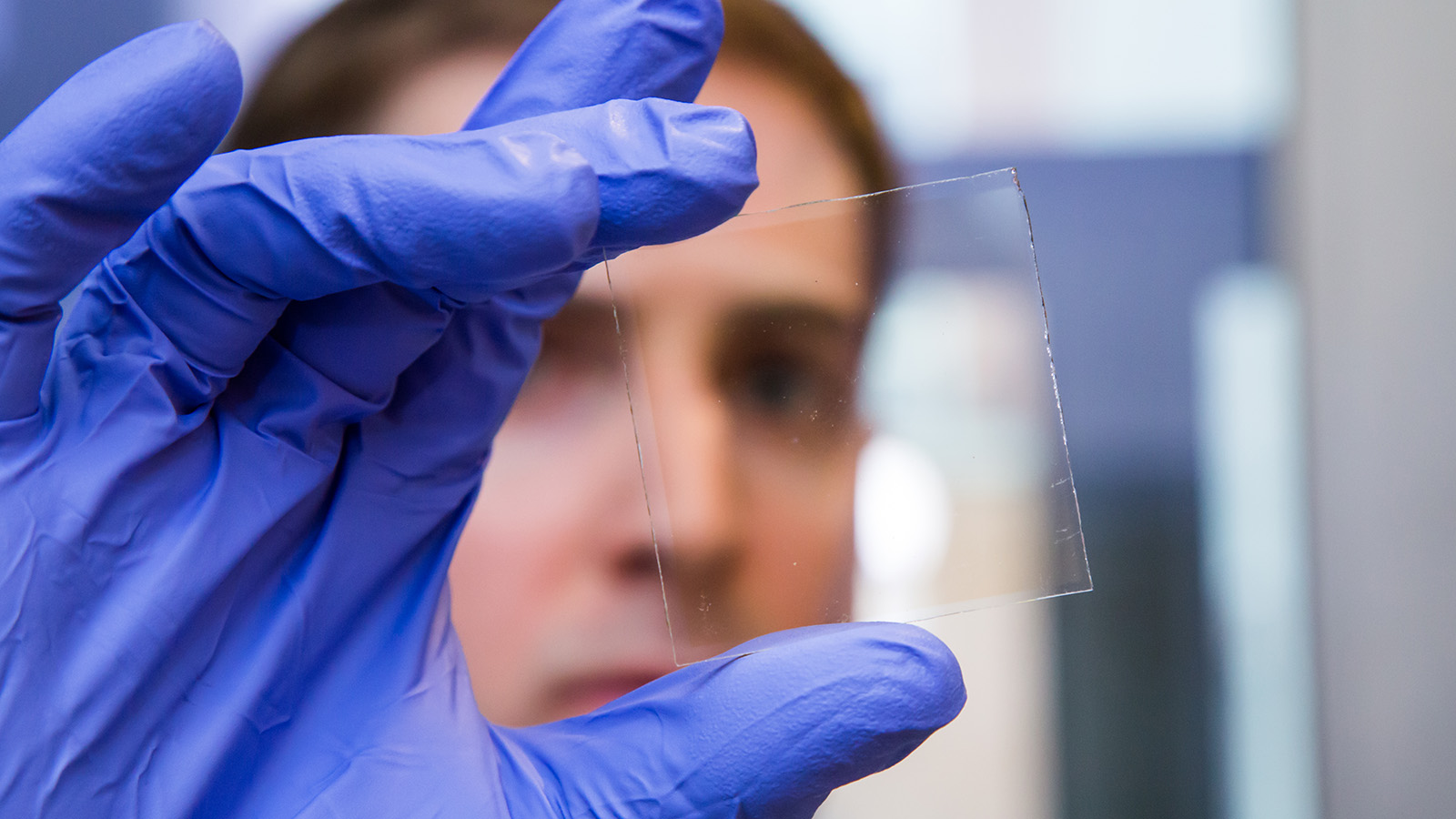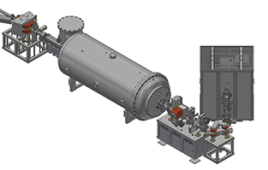
Graduate student Nicholas Davy holds a sample of the special window glass. (Photos by David Kelly Crow)
A team from Princeton University have developed a window that controls different factors by varying tint, saving up to 40 percent on an average building’s energy costs.
“Sunlight is a mixture of electromagnetic radiation made up of near-UV rays, visible light and infrared energy or heat,” Yueh-Lin Loo, director of the Andlinger Center for Energy and the Environment and the Theodora D. ’78 and William H. Walton III ’74 Professor in engineering, said in a statement. “We wanted the smart window to dynamically control the amount of natural light and heat that can come inside, saving on energy cost and making the space more comfortable.”
By applying new solar cells that selectively absorb near-ultraviolet light, the windows are self-powered.
“This new technology is actually smart management of the entire spectrum of sunlight,” Loo said.
The researchers used organic semiconductors—contorted hexabenzocoronene derivatives—for constructing the new solar cells because its chemical structure could be modified to absorb a narrow range of wavelengths.
To make the new solar cells, the semiconductor molecules were deposited as thin films on glass, enabling the cHBC semiconductors to produce electricity when hit with sunlight.
The researchers also created a smart window using electrochromic polymers to control the tint. They can be operated solely using power produced by the solar cell. The window changes from clear to dark blue when the near-UV light from the sun generates an electrical charge in the solar cell.
The research team also is looking to create a flexible version of the solar-powered smart window system that can be applied to existing windows through lamination.
“Someone in their house or apartment could take these wireless smart window laminates—which could have a sticky backing that is peeled off—and install them on the interior of their windows,” Nicholas Davy, a doctoral student in the chemical and biological engineering department and the paper’s lead author, said in a statement. “Then you could control the sunlight passing into your home using an app on your phone, thereby instantly improving energy efficiency, comfort and privacy.”
The researchers start Andluca Technologies, a company that is exploring other applications for the transparent solar cells.
The study was published in Nature Energy.




